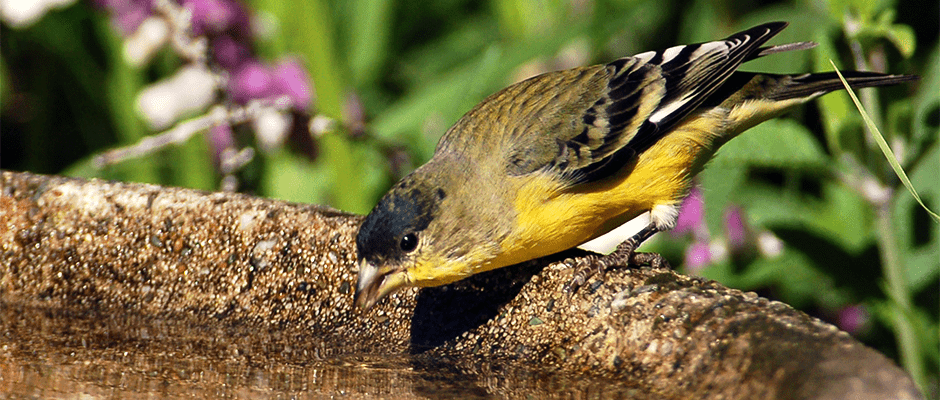Share this article
Hotter days could kill more desert songbirds
From the raucous cactus wren (Campylorhynchus brunneicapillus) to the wheezy lesser goldfinch (Spinus psaltria), desert songbirds face an increasing risk of death from dehydration in a warming climate, new research suggests.
“During the heat of the day, they lose much more water than they can gain through foraging,” said Blair Wolf, biology professor at the University of New Mexico and co-author of the paper in Proceedings of the National Academy of Sciences of the United States of America. “The only way they can stay cool is by evaporating water by panting. The rates of water loss increase greatly when temperatures increase above body temperature. Death by dehydration occurs once they have lost between 15 and 20 percent of their bodyweight in water.”
Combining physiological data and NASA temperature data, Wolf’s team examined how heat waves affected water loss and survival in five songbird species in the southwestern United States’ Sonoran Desert. These included the Abert’s towhee (Pipilo aberti), cactus wren (Campylorhynchus brunneicapillus), curve-billed thrasher (Toxostoma curvirostre), house finch (Haemorhous mexicanus) and lesser goldfinch (Spinus psaltria).
The biologists captured the songbirds, exposed them to different air temperatures in an environmental chamber and measured their body temperature, metabolism and water loss to predict how much water they would lose at any temperature. They compared this information to NASA temperature maps to understand how often the birds’ water evaporation might be fatal. They also projected how many more days of lethal dehydration the songbirds might suffer in 2100, predicting 4 degrees Celsius of warming and a forecasted 25 percent increase in the occurrence, duration and intensity of heat waves.
The scientists found that larger birds, especially those with restricted ranges, were likely to face an increased risk of dehydration, but the biggest impact was with smaller birds, which lose water at a higher rate for their body size.
“Smaller birds are at greater risk of lethal dehydration because of their smaller size, the limited amount of water in their body and their high rates of water loss,” Wolf said.
The researchers determined that smaller birds could be at least four times more likely to undergo possibly fatal dehydrating conditions by the end of the century. They concluded that increasing heat waves could seriously impact the water balance, daily activity, distribution and conservation status of birds in arid regions and recommended conserving water sources and cooler pockets of habitat.
“There can be hot spots where the center of the range could burn out,” Wolf said. “Those areas may become uninhabitable for many species by 2100. The climate’s changing much more rapidly than most animals can evolve to keep up, so they need to have enough habitat space to move to if they have to or push their range north.”
Header Image: Small desert songbirds, such as the lesser goldfinch (Spinus psaltria), are particularly vulnerable to dehydration as the climate warms. ©Matt Knoth/Gregory Smith








